
Rising Stars of Cinematography 2017
American Cinematographer profiles 10 rising directors of photography who are making their mark.
Every accomplished cinematographer has an origin story, and AC has set out to capture a few as they happen. From an immense field of worthy candidates, we present the tales of 10 up-and-coming directors of photography whose impressive work to date in commercials, music videos, shorts, series and features promises stellar achievements in the years to come: Carmen Cabana; Bjorn Charpentier, SBC; Ruben Impens, SBC; Kira Kelly; Jakub Kijowski, PSC; Oona Menges; Becky Parsons; Quyen Tran; Pieter Vermeer; and Ed Wu.
At this point in their careers, these promising cinematographers have all managed to find agency representation through firms that include Agency for the Performing Arts, Worldwide Production Agency, ICM Partners, Intrinsic, Claire Best and Associates, Lenhoff & Lenhoff, Dattner Dispoto and Associates, William Morris Endeavor Entertainment, and Murtha Skouras Agency. In a separate story, a number of their agents share advice for others who aspire to a career behind the camera.
Carmen Cabana
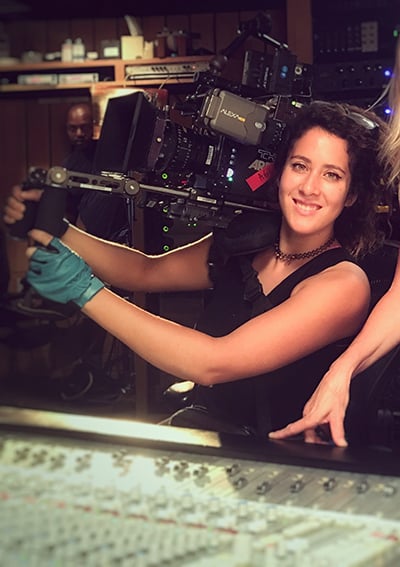
Growing up in Colombia, Carmen Cabana dreamed of a career in filmmaking. “I never wanted to sit behind a desk and follow a routine schedule,” she says, explaining her decision to move to the U.S. in 2005. She trained at the Art Institute of California – Los Angeles, where she planned to pursue a career as a writer until she realized she had other strengths. “Midway into my education I objectively realized that I had no talent for writing, but my fellow students kept asking me to shoot their shorts because they thought I had a good eye.”
The emphasis at the Art Institute was in postproduction and screenwriting, which Cabana ultimately saw as a benefit. “Having knowledge in other aspects of filmmaking has given me an advantage by allowing me to understand other people’s jobs,” she explains. “When I work I am conscious of the needs of others and I see the big picture.”
Cabana filled in the gaps in her education by reading books like Masters of Light: Conversations with Contemporary Cinematographers and consuming as many American Cinematographer articles as she could — in fact, she credits AC circulation director Saul Molina as her number-one mentor. “He introduced me to the magazine and to the first books that shaped me as a cinematographer,” she recalls.
Cabana received what she considers to be her big break on her second feature, Cartas a Elena (Letters to Elena), which came about under surprising circumstances. “My friend who was doing a very low-budget comedy needed extras in swimsuits, so I put an ad on Craigslist,” she remembers. “A producer, Peter Odio, saw the ad, and for some reason he contacted me. He told me he was not interested in wearing a Speedo for our car-wash scene, but that he was looking for a female director of photography who could speak Spanish.” Cartas a Elena put Cabana on the map, leading to multiple features and to the cinematographer’s highest profile work to date on season two of the Netflix series Narcos.
Cabana has earned accolades for her action photography on the show, and revels in the opportunities it has created for her. “I love action, and Narcos gave me an opening to do things I have never done before — explosions, car chases, shootouts, miniature work — and to use tools that I never had available due to budget restrictions.”
When asked what’s next, Cabana excitedly responds with a long list of projects and ideas; she’s especially interested in creating VR content while continuing to pursue her aspirations in features and TV. “I dream of shooting a show like American Horror Story or Westworld,” she says. Laughing, she adds, “Just putting that out there.”
Bjorn Charpentier, SBC
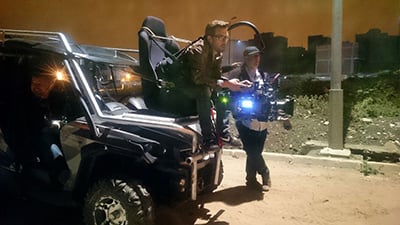
Belgian cinematographer Bjorn Charpentier, SBC was always a movie lover, but one film in particular made an impression. “When I saw The Rock, directed by Michael Bay and shot by John Schwartzman, ASC, I was blown away by the dynamic framing and lighting,” he recalls. “That film made me interested in photography.”
Charpentier began his formal training at the Narafi campus of the Luca School of Arts in Belgium, and went on to work with Danny Elsen, NSC, SBC as a camera assistant. Charpentier’s career was further facilitated by a Belgian directing duo known as “Norman Bates,” who brought him on board for several international projects.
Now, Charpentier divides his time between commercials, music videos and features. He recently received high honors at Cannes with a promotional spot called 100 that he shot for Leica, which won a Grand Prix and a Gold Lion in 2015. “That was a career changer for me,” he says.
Charpentier enjoys moving back and forth between film and digital — sometimes on the same project. “I shot several commercials where I combined both,” he says. A Jeep commercial that spans various time periods, for example, “was shot on Alexa, Super 8mm, 16mm, and even on the iPhone, all in one project.” He adds, “The advantage of digital is that you can push the image further because you can see the direct result on the monitors. You don’t have sleepless nights waiting for the prints. Also, the sensitivity is greater, so I can use less light and a smaller generator, and I have fewer reloads with digital, so the director can keep shooting and find more emotional moments with the actors.”
In terms of his narrative feature work, Charpentier is particularly excited about a pair of features that he shot in anamorphic format with vintage glass on Arri’s Alexa Plus 4:3 with an XR Module upgrade. “Over the last two years, I’ve been shooting an epic sci-fi story titled Behold a White Horse. Every shot looks extremely expensive, even though we shot it with a small budget and with small lighting setups, as we wanted to keep our footprint to a minimum. The idea was to take items away from the existing locations and to turn lights off instead of adding them.”
For director Brad Anderson’s High Wire Act, “Brad wanted to push the limits of darkness and night scenes. The theory was that we would light everything from within the location with lots of practicals and a lot of murky industrial lights and old fluorescents. Given the aesthetic we were going for, I shot with a lot of reflected light, which meant that all the sources in the frame would have to be shiny — the walls and even the makeup.” Charpentier teamed with production designer Arad Sawat and supervising art director Ian Bailie to achieve that plan, and is quick to praise his collaborators on all of his projects. That said, he singles out one partner as most deserving of the credit for his work: “My wife supports me all the way. That is the main reason I can do what I love.”
Ruben Impens, SBC
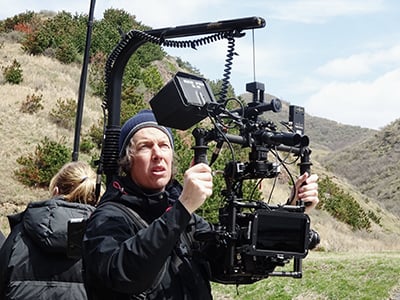
Ruben Impens, SBC, also from Belgium, visited a film set as a teenager and immediately knew that he wanted to participate in making movies. “At that point I didn’t know I wanted to be a director of photography — I just knew that I was interested in filmmaking,” he recalls. He enrolled at the Royal Academy of Fine Arts in Ghent, where his first year was spent studying both directing and still photography. “It was kind of a strange situation that the school didn’t really have a cinematography program. It’s mostly for directors, still photographers and other artists — design, sculpture and that kind of thing.”
While still in school, Impens began working as a clapper loader for director of photography Walther Vanden Ende, who became a mentor along with another Belgian cameraman, Jan Vancaillie, SBC. He worked as a focus puller for several years while shooting footage on the side, and ultimately found a valuable partner in director Felix Van Groeningen. Their film The Broken Circle Breakdown was nominated for a Best Foreign Language Film Oscar in 2014, though Impens is more partial to their prior collaboration, The Misfortunates. “That was the first time I thought to myself, ‘Maybe I’m not bad at cinematography,’” he says with a laugh. “It’s a movie with a lot of flashbacks and different time periods, and we shot it digitally but treated it with different looks for different sections — black-and-white, grain, etc. When we screened it and people asked what different film stocks we used, I knew we had done something right, because we didn’t use film at all — it was all shot on the Red One.”
Impens adds that he “likes film a lot, but in a small country like Belgium, our budgets are low and the film stock can become a big part of the budget — 15 percent of your money goes to processing and stock.” Currently Impens hopes to work on Van Groeningen’s next project, a film he’s developing to shoot in America. “At this point I think I’ve done something like 15 features, so I’m becoming a little more selective in terms of the scripts,” he says. “I really want to focus on the most challenging stories possible.”
Kira Kelly
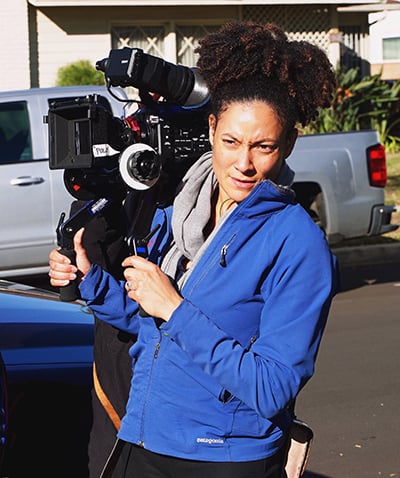
Like many of the cinematographers profiled in this piece, Kira Kelly is comfortable in a variety of genres and styles, jumping back and forth between documentary and narrative features, as well as music videos and commercials. She recently garnered acclaim for Ava DuVernay’s 13th, a powerful documentary about mass incarceration. “I’m beyond proud of that movie,” she says, noting that she shared cinematography duties on the project with Hans Charles.
Kelly worked as a gaffer in New York City after discovering her passion for the camera department in film school. “In high school I loved movies, but I couldn’t have told you the difference between a director and a producer,” she recalls. “I went to college at Northwestern University, just north of Chicago, and as a freshman you basically just work on older students’ projects. I worked in a number of areas, and on one project I ended up in the electrical department.” She adds with a laugh, “We worked on a rig that, in hindsight, probably wasn’t even all that great, but I got really excited about creating this rig that the audience doesn’t even see — they only see the effects it creates.”
After film school, Kelly worked her way up in the electrical department on various sets, ultimately gaffing for director of photography Zeus Morand. “I learned a lot from him about lighting and what it takes to be a good gaffer, and that ended up influencing a lot of my shooting work,” she recalls.
When director Tom Gustafson gave Kelly her first major opportunity as a cinematographer on his feature Were the World Mine, she realized that she had a choice to make. “I started getting calls,” she says, “and I would have to ask, ‘Are you calling me to gaff or are you calling me to shoot?’ I ultimately decided to just stop gaffing altogether and focus on working as a director of photography.”
Since then, Kelly has built up a wide-ranging résumé that includes not only searing documentaries like 13th, but YouTube Red’s comedy series Sing It! and Hulu’s East Los High. Though she loves all of it, she finds documentary filmmaking particularly rewarding and notes that it informs her fiction work. “I think my documentary work makes me a better director of photography for narrative projects,” she explains. “On a show like East Los High, I have more than enough support — there are trucks with almost every kind of light I could need. Sometimes on a documentary, it’s just you, or you and a 1st AC and maybe a gaffer if you’re lucky, and you’re often going into locations you haven’t scouted before. That pared-down approach makes me a more instinctive cinematographer, and it prepares me to walk on a narrative set and really make the most of whatever time and resources I have.”
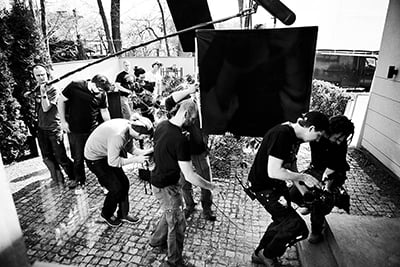
Kuba Kijowski, PSC
As a teenager growing up in Warsaw, Poland, Jakub “Kuba” Kijowski, PSC struggled in school due to his dyslexia. “I found writing to be a real problem,” he says. Luckily, some of his teachers discovered that he had a passion for visual storytelling and encouraged his interest in photography. “We were still in the analog era, so I spent my days in a darkroom that I had set up in my bedroom,” he recalls.
His interest in visual arts led him to enroll at the prestigious Lodz Film School, where he studied under cinematographers Witold Sobocinski, PSC and Jerzy Wójcik, PSC; the former received the ASC’s International Award in 2002. They and director of photography Jolanta Dylewska, PSC taught him that “the job is not about technical tricks but about telling a story,” Kijowski says. Dylewska brought Kijowski fully into the fold when she took him on as a camera operator for Agnieszka Holland’s In Darkness. “We worked in Germany and in Poland with an international crew and cast,” he recalls of the massive production. “It was a great experience working with a big crew on an original, creative film.”
After In Darkness, Kijowski quickly rose to prominence as a cinematographer in Poland, receiving a Camerimage nomination in 2013 for the minimalistic psychological drama Floating Skyscrapers. “We were searching for visual expression that would underline the loneliness of the two main characters,” he says.
His next feature, The Lure, was a “fairytale for adults” that won the World Cinema Dramatic Special Jury Award for Unique Vision and Design at the 2016 Sundance Film Festival. “The story takes place in Warsaw in the Eighties and involves two young mermaids who appear innocent but are in fact bloodthirsty beasts,” Kijowski explains. “I aimed at presenting this duality of innocence and brutality, beauty and repugnance, obviousness and mystery by merging opposing aesthetics. I wanted to link the colorful, fairytale world of a dance club with the vicious naturalism of sordid interiors.” Kijowski plans to reunite with The Lure director Agnieszka Smoczynska on her new film, about a woman with memory loss who is reunited with her family — “a psychological drama that we want to film like a horror story,” according to Kijowski.
Kijowski finds inspiration in the content of his films, looking for the precise visual corollary to the emotions and story. “I believe that finding an aesthetically appropriate visual form for a story contributes to its success,” he explains. “Then once you start telling the story, you move to a higher level. You become an author.”
Oona Menges
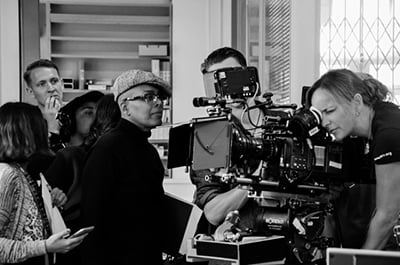
Oona Menges grew up with cinematography in her blood — her father is Academy- and ASC Award-winning director of photography Chris Menges, ASC, BSC. “My parents’ friends were all filmmakers and Magnum photographers, so I have always been around cameras and discussions of images,” she says.
Menges has an impressive list of mentors that includes Ivan Strasburg, BSC; Robert Alazraki, AFC; Ashley Rowe, BSC; Angus Hudson, BSC; Barry Ackroyd, BSC; Robby Müller, NSC, BVK; John Mathieson, BSC; Alan Almond, BSC; and Chris Seager, BSC. Not surprisingly, Menges got an early start, working as a runner on set while still a teenager before graduating to clapper loader when Sandi Sissel, ASC gave her the position on the film No Secrets.
“I was beaten into shape by two excellent camera assistants, Jacqui Compton and Sue Zwilling,” she recalls, adding that her days as a loader and focus puller taught her the importance of prep. “You have to surround yourself with the best and most positive crew you can, and remain flexible and ready to grab opportunities. There is no room for ego.”
For Menges, cinematography is an art form dependent on capturing energy: “My overall philosophy is that light is a spirit. When this concept is embraced, magic can happen.” Although she loves digital technology, she worries that it sometimes works against the creative process. “We can be too focused on all the bells and whistles, with clinical and polished films as a result,” she says, adding that the digital world has also “produced a generation of producers and directors who think we now have such powerful sensors that our jobs are practically obsolete — ‘if you can see it, shoot it.’ They don’t understand that exposure is the least of it.”
Menges says that her best experience with digital was on a series called Different for Girls. “We sent the ‘mags’ straight to [colorist] Matt Watson at Shed London with no downloading or DIT on set. He then uploaded the rushes for the execs in New York and for us on-set in London. So we were treating it exactly as though it was film, but with all the positive contributions of digital.”
Menges’ devotion to an intimate relationship with her images leads her to continue to operate whenever possible. “I have worked with operators and enjoyed it,” she says, “but I feel disconnected when I don’t have my eye to the camera.”
Becky Parsons
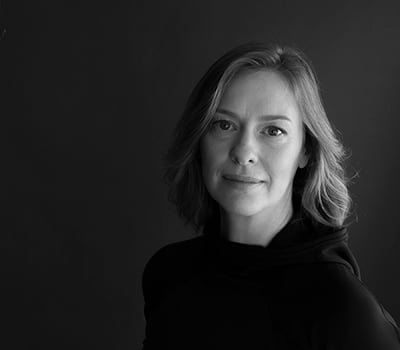
Becky Parsons also became interested in movies thanks to her father, though in her case her dad had no ties to the film business. “He was a layout designer and typographer — nothing to do with the film or television industry,” she explains, “but he always had the latest consumer video cameras and TVs, and was — and is — an avid follower of film.”
Living in London, Parsons would often stumble across productions shooting in the streets. “I remember seeing a Steadicam in action for the first time as a young kid at Billingsgate Market. That was the first time I thought about the different jobs in moviemaking.” Parsons studied photography, performance art and audiovisual mixed media at the Wimbledon School of Art (now Wimbledon College of Art) in England before moving to Halifax, Canada, to complete her studies at the Nova Scotia College of Art and Design.
Although her degree was in photography, she was shooting short films before she graduated, and after college she took whatever jobs she could get to gain experience. “I carried sandbags, put lights together, and at leaner times joined other departments like set dressing,” she says. She ultimately found work as a camera assistant on such projects as the TV movie Homeless to Harvard: The Liz Murray Story, which was photographed by Uta Briesewitz, ASC. “She went on to shoot The Wire,” Parsons recalls. “Her handheld work was impeccable.” Parsons was also mentored by photographer John Glover, whose influence on her work, she says, has been profound.
Both the celluloid and digital work of Roger Deakins, ASC, BSC continue to inspire Parsons and shape her own philosophy when it comes to cinematography. “I agree with his aversive attitude toward creating stunning images simply for the sake of creating stunning images,” she explains. “The job is more about creating images that are in service of a larger purpose.” Parsons skillfully applied that theory to her work on Weirdos, a coming-of-age story set in the 1970s that garnered widespread acclaim at last year’s Toronto International Film Festival — and is set for wide theatrical release in Canada on March 17. Parsons’ black-and-white photography was singled out by critics, and she loved the opportunity to shoot monochrome in a period setting. “It was a pleasure to see a moving black-and-white view of the world through the eyepiece, and to work with contrast alone,” she says.
Having shot in both color and black-and-white, and on film as well as digital, Parsons remains open to the possibilities inherent in all formats. “I feel blessed that I am from a generation that knows well what it is to shoot on film,” she says — and adds that “digital sensors able to dip more and more into the low lights create a whole new set of choices for the cinematographer. The study of this craft is wonderfully endless.”
Quyen Tran
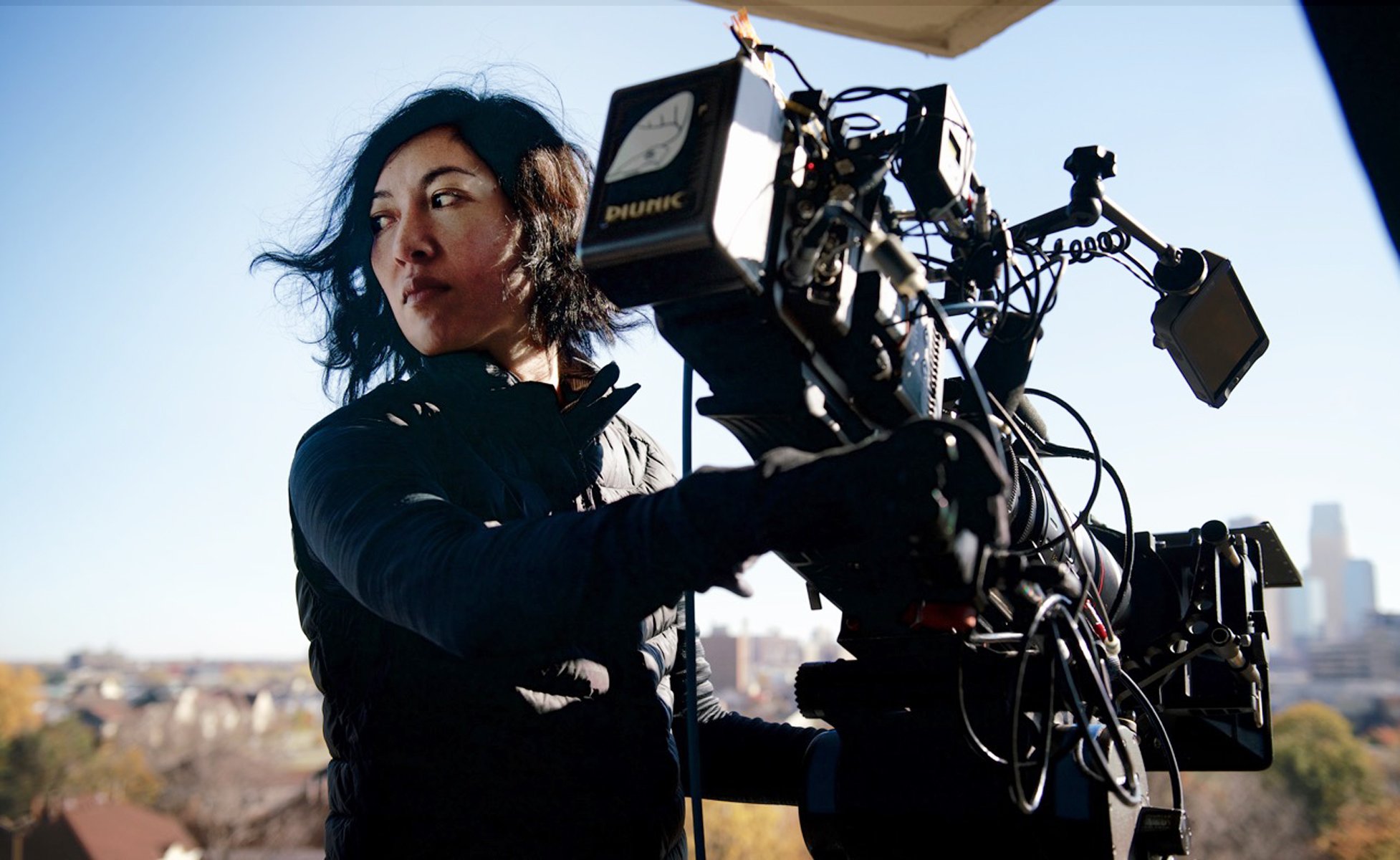
Quyen Tran came to the cinema via still photography and photojournalism, disciplines that continue to inform her work as a director of photography. “Hailing from a photojournalistic background, I’m always looking to tell the story in the most economical way possible,” she explains. “With stills, you have one frame to tell a story. Sure, it can be beautifully composed and lit, but what is the essence of that frame? Why does it exist? What’s behind those eyes?”
It was while shooting stills on an NYU thesis film that Tran caught the movie bug and decided to apply to film school herself. She attended UCLA, where she met cinematographer-in-residence Roger Deakins, ASC, BSC, who became a valued mentor, along with Johnny Simmons, ASC. In fact, she still implements a piece of advice from Simmons regularly. “He said, ‘Anyone can get the job done, but how do you want to do the job?’ — which really stuck with me,” she says.
Tran also received some valuable extracurricular education by spending time in her sister-in-law’s editing room, where she had the opportunity to study footage from films like There Will Be Blood. “I got to see [ASC member] Robert Elswit’s dailies, which was insanely amazing,” she recalls. “That taught me a lot about coverage and gave me a totally different perspective from what I was learning in the classroom.”
Tran’s time at UCLA led to her first job as director of photography — when she shot a professor’s movie before graduating — and she then moved on to projects like Girlfriend (2010), a $150,000 feature starring a young man with Down syndrome. “On that set I learned a lot about people with Down syndrome, and it really changed me,” she says. “It made me a more compassionate human being.”
Tran was similarly affected by her work on the award-winning documentary American Revolutionary: The Evolution of Grace Lee Boggs. “Director Grace Lee and I worked on that for six years, and it really changed the way I see the world today. It’s the reason I started gardening, it’s the reason why I became more interested in politics, and all of that makes me a better storyteller.”
Tran’s interest in conservation informs not only her approach to storytelling, but also her feelings regarding the film-versus-digital debate. “I used to love printing in the darkroom, and as a still photographer I was one of the last photojournalists to switch to digital,” she says. “However, I quickly learned to adapt to the new format, and there seemed to be a lot less waste, which is important to me.”
At the time of this writing, Tran had just shot a pilot for HBO called Mogadishu, Minnesota, and was prepping for the presentation of two narrative features at Sundance entitled The Little Hours and Deidra & Laney Rob a Train. She reiterates her belief that it’s ultimately all about story: “Technical aspects aside, as long as I’m telling meaningful and impactful stories, I’m a happy shooter.”
Pieter Vermeer

Dutch director of photography Pieter Vermeer also found his way to cinema via still photography. “Both of my parents are artists, so I grew up in a visual environment,” he explains. At the same time, Vermeer was becoming exposed to the work of filmmakers like Bertolucci, Fassbinder, Polanski and Scorsese. “I became more and more interested in telling stories with a camera as opposed to just dealing with a single image,” he says.
His first break came with an internship operating a primitive form of video assist for director Pieter Verhoeff. “Eventually, Pieter took me on to his next movie, where I worked in the electrical department,” Vermeer recalls. Vermeer went on to work as a grip and gaffer on a number of films in the Netherlands, ultimately becoming a director of photography in commercials. “I went international, shooting commercials in France, England, the U.S. — which led me to relocate to New York in 1997.”
Through music videos and commercials, Vermeer met director Elliott Lester, who asked the cinematographer to shoot his features Nightingale (2014) and Aftermath (2016). These films allowed Vermeer to flex different creative muscles than he had been accustomed to with his shorter-form work. “Commercials and features are quite different animals,” he says. “In a film, you have so much more time to tell your story and to develop your shots and scenes; in commercials, you have 30 to 60 seconds and generally the main purpose is to sell something.”
While working in features, commercials and music videos has allowed Vermeer to shoot extensively on film negative, he has fully embraced the digital revolution. “I like the latitude and color space of digital,” he says, having shot his last three features on Arri Alexa cameras. “Don’t get me wrong, I sometimes miss the texture and grain that come with shooting film. Unfortunately, in my experience the infrastructure for shooting on film is slowly disappearing; it’s difficult to find the right people and the right labs.”
When shooting digital anamorphic, Vermeer tries to take the sharp edges off by using older glass like Panavision C and E lenses. “I’m always trying to deconstruct the image a little in digital,” he says, adding that he spends a great deal of time in the final color correction fine-tuning the image. “The possibilities for finessing it there are fantastic,” he asserts, “though in the end it’s all about taste and vision — how your taste as a cinematographer allows you to find a visual interpretation that helps tell the story.”
Ed Wu

Cinematographer Ed Wu didn’t start out with aspirations to work in the camera department — in fact, he didn’t have aspirations to work in movies at all. He began as a classically trained musician, and throughout his pre-college years, he recalls, “I always thought that was what I was going to do. I think it has a big influence on how I approach cinematography. Listening to and playing classical music, you have an attachment to the instrument and how you express the notes on the page. You feel it. With cinematography, I have to tune out what’s around me and think about how the camera movement feels and how it’s emotionally impacting me.”
Wu developed an interest in filmmaking while working on a video-yearbook project in high school, but he still didn’t realize that cinematography was where he belonged. “I didn’t even know what the name for that job was,” he remembers. He laughs as he recalls that he finally became aware of the role of director of photography by reading a book called What I Really Want to Do on Set in Hollywood. “I read the description for ‘cinematographer’ and that was it,” he says.
As an undergrad, Wu bought a Canon EOS 5D Mark II, eventually amassing enough good material to get into the American Film Institute, which is where he feels he truly became a cinematographer. “It really opened my eyes to ask how camera placement affects how we relate to a character in a scene, or whose perspective the shots are from and why,” he recalls.
AFI gave Wu something important in terms of mentorship as well. “At AFI we had many professors who were mentors to me,” he says. “Stephen Lighthill, ASC; Bob Primes, ASC; Sandra Valde-Hansen; Tal Lazar — but the most influential for me was Bill Dill, ASC. He taught me so much about how to ask questions about what’s driving the camera.” Wu recalls that Dill’s tough-love style could be a bit much for some students. “He doesn’t hold anything back when he breaks down your films,” Wu recalls. “I’ve heard of students crying in his class. But in the end, you learn so much. I think it’s rare in our industry, or as artists, to be critiqued critically in a nonjudgmental way, where the stakes aren’t that high.”
After AFI, Wu developed relationships with cinematographers Rachel Morrison, ASC and Edu Grau through the mentorship program at Film Independent’s Project Involve. “They’ve helped me wade through the political aspects and nervous breakdowns of bigger challenges on bigger projects,” he says. Through Project Involve, Wu also met the producer of Sleight, which was Wu’s first feature. It premiered at Sundance to critical acclaim and a positive audience response, but Wu notes that he still feels like a newcomer. “In all honesty,” he says with a laugh, “I’m still breaking in.”






